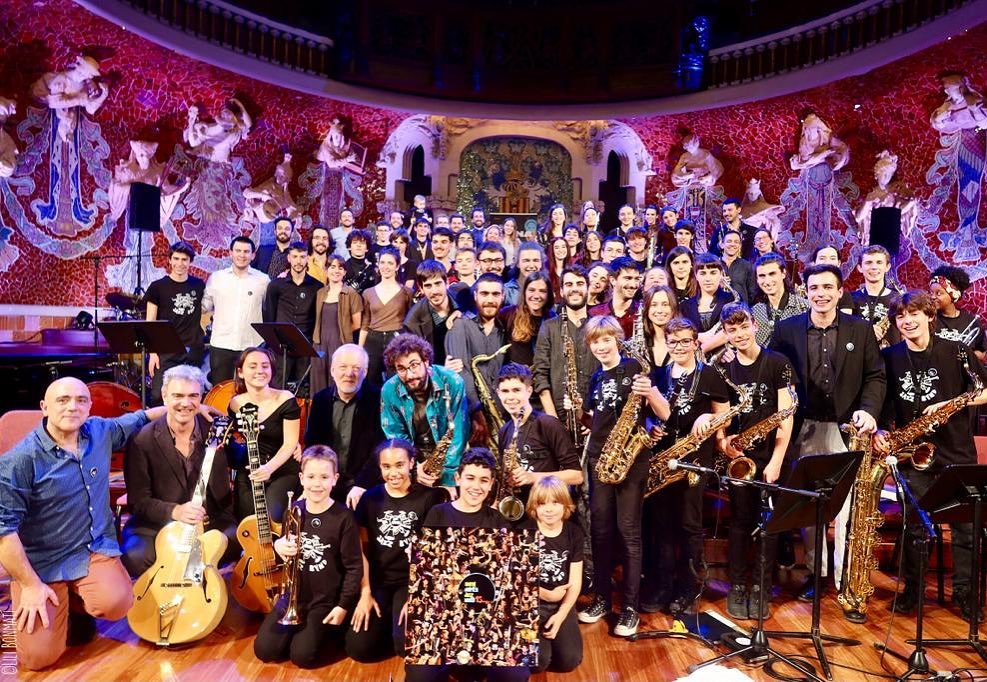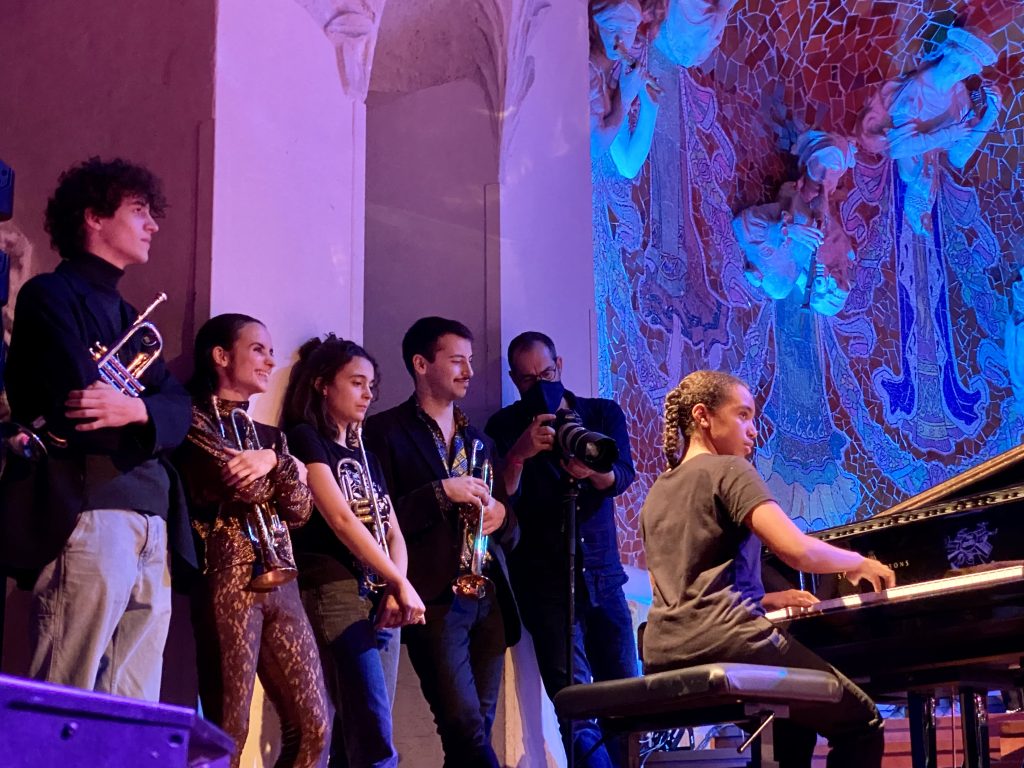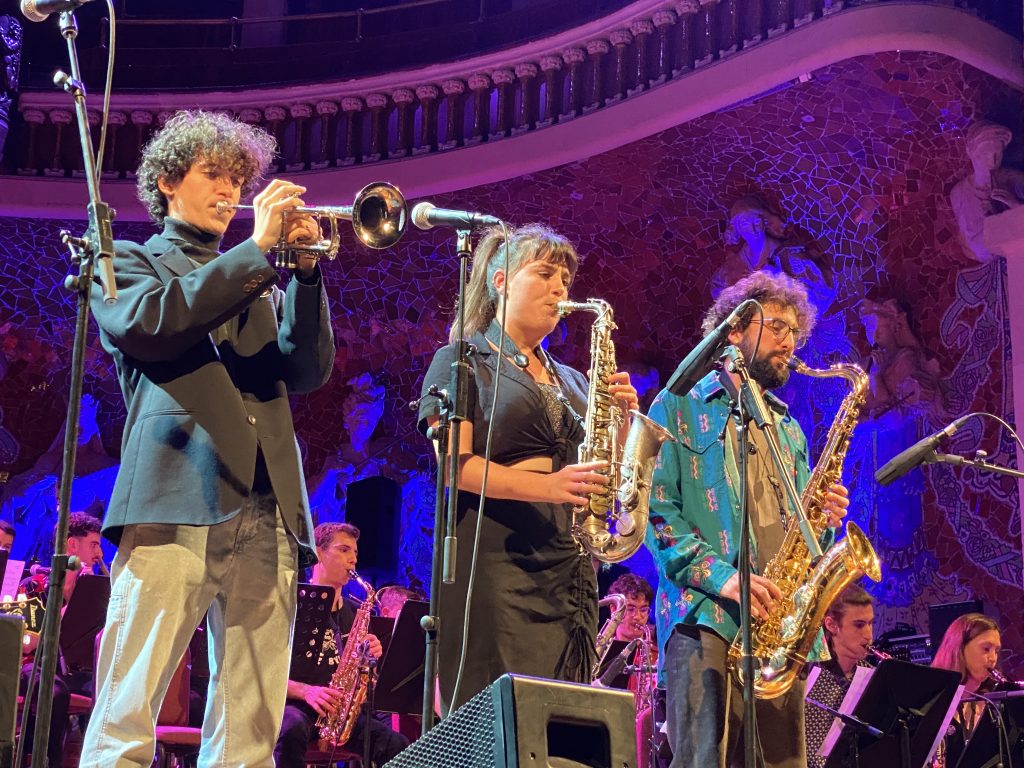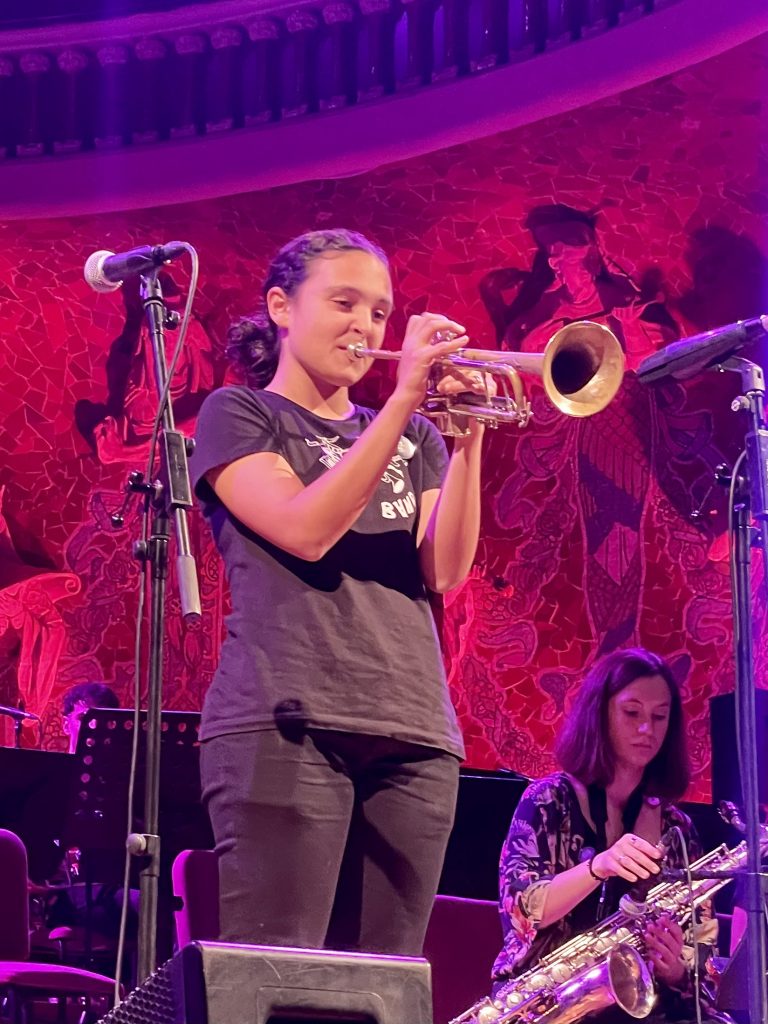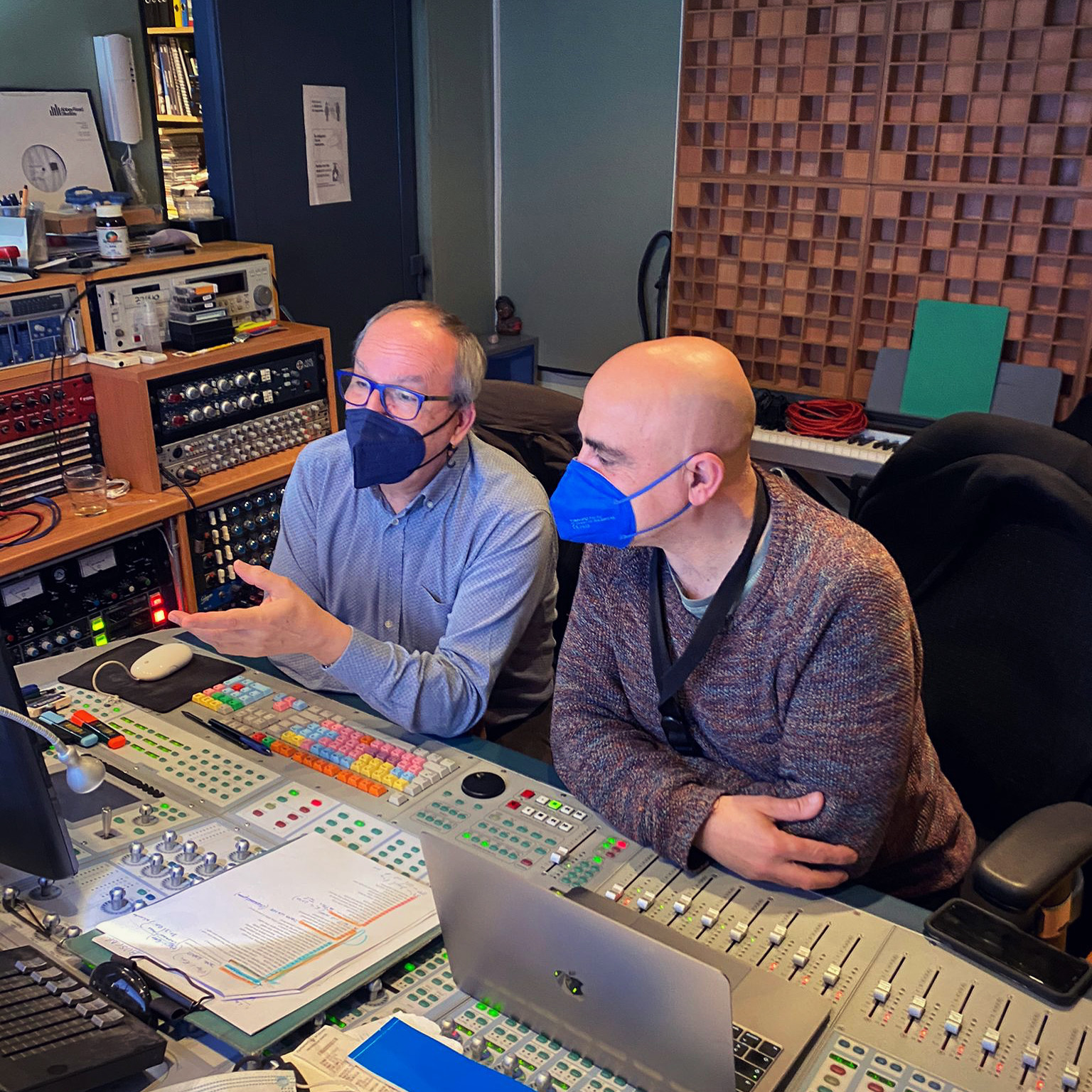In a couple of my explorative listening sessions last year (2023), I found two songs with vocals by the Spanish singer and composer/songwriter Sílvia Pérez Cruz. I had never heard her before, even though, as I learned later, she has been a successful singer for many years.
I searched for more of her music, and finding more, Sílvia became one of my favourite artists. I introduced my wife to her music, and we now regularly listen to Sílvia in our many hours of shared experience of music. Sometimes by our active choice, sometimes as the result of the association function of Spotify.
How come that I did not discover Sílvia earlier, and what is it about her music that I appreciate so much?
Finding music
Actually, I most often find music that is new to me with the help of Spotify, and the suggested music often appeals to me. Sometimes that function of the streaming services is criticised, on the assumption that it leaves us fenced in; meaning that we continue to listen to the same kind of music all the time. That is not my experience. When suggesting music, the streaming services sometimes can take quite a leap from my chosen point of departure, but there is always some kind of bridge from that starting point to the suggested music.
I believe bridges are important to our ability to learn to appreciate new music. It is difficult to like something that is totally different to your basic musical taste, but by crossing musical bridges put before you, you can in fact expand your taste and habits of music listening. The big change might not happen all at once, but by being somewhat active you and the streaming service can work together on a long-term trend of development. Being active means that you show which new routes you appreciate and, when you find yourself in a musical back alley, you start all over from a new point of departure.
Going south – finding Sílvia
Long before streaming services, musical bridges were of course established by musicians themselves. In the early 1960s, American jazz saxophonist Stan Getz and the Brazilian composer and musician Antonio Carlos Jobim began their collaboration, and together they helped many around the world to discover Brazilian Bossa Nova.
Some ten years ago I crossed that bridge to explore Brazilian music in general. While exploring, streaming services offered me a bridge to Portuguese music, probably given the important cultural links between the two countries. Once in Portugal I eventually found the Portuguese fado. This was an important breakthrough for me and my wife, and we have since enjoyed a lot of fado – both recordings and live on location in the fado houses of Lisbon.
Maybe that was the start of a new trend for us, when searching for new music. A couple of years ago we realised that we increasingly listened to music of ‘the south’, and consequently, less to music of ‘the north’. I cannot tell afterwards exactly what routes have brought me to other musical cultures of the south, but now music from Portugal, Spain, France, Cap Verde, Mexico, Cuba, Argentina, Brazil etc are parts of our musical habitats. Of course, we still frequently listen to music from northern Europe and North America (mainly jazz), but currently most of the roads which we travel to find music new to us remain to the south.
Having found the kind of music that Sílvia Pérez Cruz represents is part of that trend, in which Sílvia to us is a major discovery. She is now very much part of our main playlist such that we listen to her regularly and on many different occasions in our home.
How come that I did not discover Sílvia earlier? After all, she has by now a quite extensive discography. She was the vocalist of the female flamenco quartet Las Migas when they released their first album Reinas del Matute in 2010. However, neither of the individual members are mentioned on Spotify. But on later albums Sílvia is always mentioned as a solo artist and/or in collaborations:
- 11 De Novembre (2012)
- Granada (2014) with Raül Refree
- Immigrasions (2015) with Raül Refree and Ernest Snajer
- En la Imaginación (2016) with Javier Colina trio
- Domus (2016)
- Vestida De Nit (2017)
- MA: Live in Tokyo (2020) with Marco Mezquida,
- Farsa (género imposible) (2020)
- Toda la vida, un día (2023)
Sílvia has also released many single releases, and she appears on other artists’ recordings.
Reading articles about Sílvia in the international press, I realise that she is not only into several different music genres as a singer and composer, but that she also enters other forms of artistic expression, such as dance, theatre and film projects. Some of those expressions can be seen in her music videos. And the articles I find are very positive.
Is Sílvia maybe too versatile to be easily captured by the logarithms of streaming services? Or is there a significant genre distinction, not easily crossed by the algorithms, between some of the music of Sílvia Pérez Cruz and other genres I usually listen to?
Maybe it was my love of fado that eventually led me to the album Reinas del Matute with Las Migas, an album from her early career, and maybe it was my love of jazz that led me to find the wonderful collaboration between Sílvia and the Javier Colina trio, En la Imaginación, a mix of jazz and flamenco. That seems logical. And it also seems logical that her collaboration with Raül Refree at first did not easily find its way into the suggestions of streaming services to me. Some of their collaboration is maybe still too different to my favourite kinds of music. Sílvia’s later albums are closer, and I find the latest album, Toda la Vida, very beautiful.
I still do not know why I did not find Sílvia Pérez Cruz earlier. But whatever the reason, I have now found her. And in the end, it was a streaming service which led me to her.
The music of Sílvia Pérez Cruz
There is a statement on the official website of Sílvia Pérez Cruz that is very close to what I feel for her as an artist. In my translation, this is what it reads.
It would be impossible to classify Sílvia Pérez Cruz in a single style. She is versatile and unmistakably personal. Two qualities that rarely coincide, but which are defining qualities of Sílvia. She is faithful to the different styles that she approaches without ceasing to be, at any time, herself.
“Versatile and unmistakably personal”. Exactly. When I listen to one of her songs for the first time, I am happy to identify her after only a few bars, although the piece can be quite different to any of her songs that I have heard before. And for each new attractive song that I find, my appreciation of her grows.
I have found Wikipedia articles on Sílvia Pérez Cruz in English, Spanish and Catalan. As they classify the music of Sílvia in different ways, and/or use different genre names, they probably have different authors. They might look upon Sílvia´s music in slightly different ways, and together they give us a multifaceted picture of her music.
- All three articles mention Flamenco as a separate genre, but the Catalan article adds the Flamenco rumba.
- Jazz is mentioned in the English and Spanish articles, but not in the Catalan.
- Classical music is mentioned in the English and the Catalan articles, but not in the Spanish article.
- Folklore is mentioned in all three, but the Spanish article differs between South American and Iberian folklore.
- Contradanza, Fado and Tonada are only mentioned in the English article.
- Canción de autor (author song – singer-songwriter) is mentioned in the English and Spanish articles.
- Musical fusion, Mediterranean music and Experimental music are mentioned only in the Catalan article.
The different classifications might be interesting in themselves to study and compare, but as I do not know the full characteristics and borders of the mentioned genres I will not try. However, what I do know is that I very much appreciate many of the results of Sílvia lending her own expression to different genres. (I admit that I have come across some music that I have not learned to appreciate, but there is time ahead to get to know that music too.)
Obviously, the first song I discovered (María la Portuguesa with Las Migas) is a fado song, and the second (Debí Llorar together with Javier Colina Trio) has a jazz flavour, but it is fair to say that both also have a flamenco flavour. And, of course, a Sílvia flavour.
The personal tone and the dynamics of the expression are important to my appreciation of Sílvia’s music. Her modern and soft version of flamenco is often present, and its melodic ornamentation contributes to the dynamics. But different sorts of flamenco are not present in every song by Sílvia Pérez Cruz. There are songs with other characteristics as you can find out for yourself, listening to the songs below.
My appreciation also rests on the arrangements of the songs, which in addition to Sílvia’s vocals, involve contributions from other singers (sometimes even a choir) and accompanying instruments. Many of these arrangements are absolutely wonderful, and they are richly varied. Each of these recordings is its own piece of musical jewellery.
A confession about lyrics
Although Sílvia herself claims the importance of the stories being told in the songs, I must confess that I do not understand them, simply because I do not understand the language. I have the same problem with the Portuguese fado, but this does not stop me from loving the music. It speaks to me through the beauty of the music and through the language of emotions. This is very much the case with Sílvia’s music. However, sometimes a video can help me to understand the general theme of the song.
When I was quite young, many of the songs I heard on the radio were from other countries. In many of them, the lyrics were in English, but I also heard songs in French, Spanish, Portuguese and other languages. Although young, I loved some of those songs. One can say that I learned how to love songs without understanding the lyrics. When I did not have to bother about the message of the songs expressed in words, maybe I even grew extra sensitive to dimensions of the melodies, the harmonies, the rhythms, and the individual sounds and expressions of the instruments and voices. The songs ‘spoke’ to me without words.
When I later learned English, I often did not care very much about the lyrics anyway, as I had learned a way to enjoy music without understanding those lyrics.
This is probably why I do not find it odd to listen to music without understanding lyrics. As a matter of fact, I often do not care very much for the lyrics in my own language either. The understanding of lyrics might even interfere with my appreciation of the musical dimensions of a song. However, this does not mean that I could just as well listen only to instrumental music. There is a lot of sophisticated instrumental music that I love to experience, but in other types of music the human voice means a lot – perhaps more when it alone (without my understanding of the language) has to carry the transmission of feelings to me. The quality of the human voice is to me different to that of any other instrument and knowing that there is a message in what the singer expresses makes a huge difference. I do not have to understand the exact message, but I must believe in the sincerity of the singer’s expression.
A friend of mine once said: “But what if the lyrics are bad?!” My answer was: “So much the better I do not have to find out that someone has written poor lyrics to a wonderful melody, to a wonderful voice.”
But I must confess that Sílvia’s music has challenged my position about enjoying music without understanding the lyrics. Sílvia’s own position, and what the reviewers write in their reviews, has made me suspect that I might be missing something important in her music. So, I will try to find a way to understand at least some of the lyrics in her songs.
But Sílvia, if I fail to understand, you must know that you have anyway reached into my heart with the beauty and the emotions of your music.
Where do you come from?
I suppose it is by now obvious that I very much appreciate the music of Sílvia Pérez Cruz, and I of course share that appreciation with many other music lovers.
So, what about you who have never heard Sílvia before? What about you who encounter her for the first time when clicking the links below? It is difficult to assess the importance of one’s background when you start to listen to an artist, a genre, or a song that is new to you. But if my theory of the importance of roads and bridges is right, the road I have travelled and the bridges I have crossed on my way to find Sílvia matters to my appreciation. After all, I am heading south, and I have crossed over a few bridges to find her music.
But there are probably other roads and other bridges to the music of Sílvia Pérez Cruz. By which road have you come to experience her music? Think about it when you do.
Where I am in life right now, I find Sílvia’s music wonderful and exciting.
Music videos
Even if I usually use an audio streaming service to find music that is new to me, I often enjoy playing my newfound favourites on a video streaming service, like YouTube. Hear are a few videos with Sílvia Pérez Cruz. Enjoy!
.
.
.
.
Aafas Ensemble and Sílvia Pérez Cruz: Absencia
.
.
.

.
.
.
.
.
.
.
.
.
.
.
.
.


















